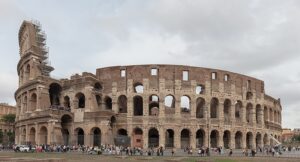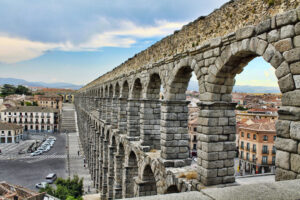Introduction
He Roman concrete in Alicante, known as opus caementicium, is a notable building material used in ancient Rome, famous for its durability and longevity. The Romans managed to build structures that have lasted for centuries, thanks to their innovations in the mixture and use of local materials, such as volcanic ash.
Composition of Roman Concrete
The basic formula of Roman concrete in Alicante included the following components:
- Slaked lime (calcium hydroxide): It acted as a binder.
- Water: Necessary for the chemical reaction of hydration.
- Crushed stone (caementa): Used as an aggregate.
- Volcanic ash (pozzolana): Provided additional strength and durability to concrete.
Formulas Used
The Romans varied the proportions of these ingredients depending on the specific application of the concrete. A common recipe could include:
- 1 part slaked lime
- 2 parts volcanic ash
- 3 parts crushed stone
Use of Volcanic Ash
The volcanic ash, or pozzolana, were a crucial component in the Roman concrete mix. These ashes reacted chemically with slaked lime and water to form a cement-like matrix, which was highly resistant to cracking and deterioration. The volcanoes around the Naples region, particularly Vesuvius, were a rich source of pozzolana.
For more information on the use of volcanic ash in modern construction, you can visit this link about pozzolana.
Properties and Advantages
He Roman concrete in Alicante It has several properties that make it stand out:
- Durability: Ability to resist degradation by seawater.
- Waterproof: Remarkable resistance to salt water erosion.
- Longevity: Structures that have lasted more than 2000 years.
Theories on the Durability of Roman Concrete
There are several theories that explain the durability of the Roman concrete in Alicante:
- Pozzolanic Reaction: The reaction between lime and pozzolan creates a hydrated calcium silicate gel, similar to modern cement.
- Tobermorite Crystal Formation: These crystals contribute significantly to the strength and durability of concrete.
- Complex Microstructures: They help distribute stresses and minimize the spread of cracks.
Applications of Roman Concrete
The Romans used their innovative concrete in a variety of structures, many of which can inspire applications in Alicante:
- Aqueducts: Like the Segovia Aqueduct.
- Buildings: The Pantheon in Rome, with its concrete dome without metal reinforcements.
- Ports and Moles: Port of Cosa and the docks of Ostia.
- Sewers and Storage: Cloaca Maxima and underground warehouses.
To explore more about Roman construction techniques, this article on roman architecture offers detailed information.
Conclusion
He Roman concrete in Alicante It remains a testament to the advanced engineering of Ancient Rome. The unique mixture of lime, volcanic ash and crushed stone allowed for the creation of structures that were not only functional but also endured throughout the centuries. Modern research continues to reveal the secrets of its durability and strength, offering valuable lessons for contemporary engineering and construction, particularly in places like Alicante.



